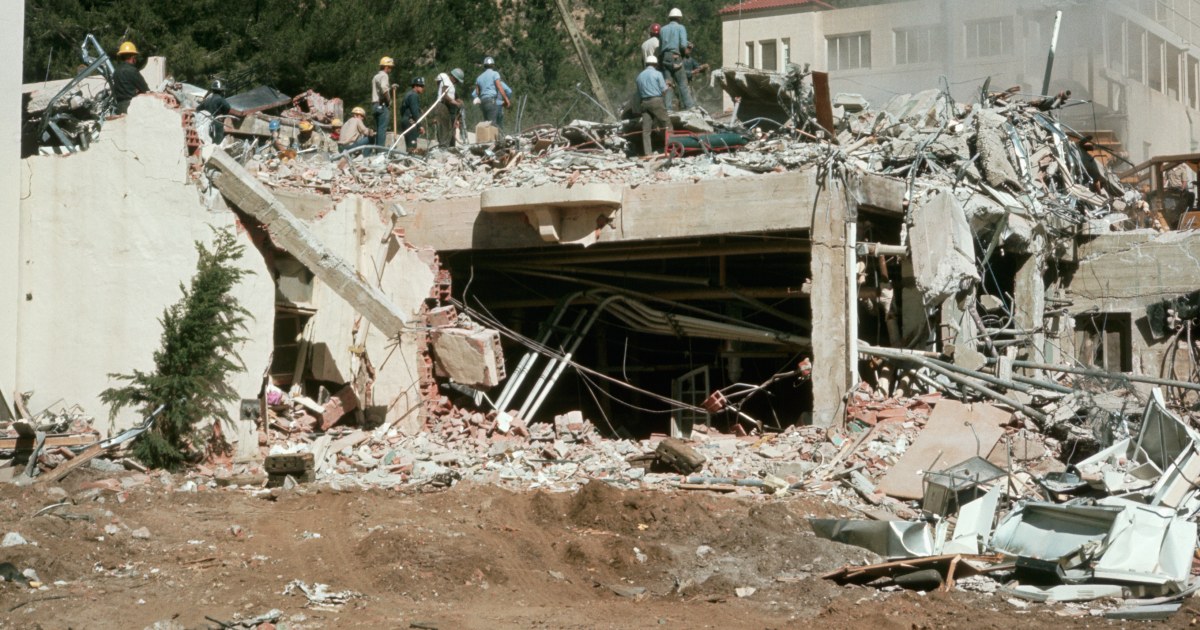The powerful earthquake that struck Turkey and Syria early Monday morning, which had claimed the lives of more than 34,000 people as of Sunday, is already one of the biggest natural disasters of the 21st century and Turkish authorities believe the catastrophe was compounded by construction problems.
Amid popular anger over the response from Recep Tayyip Erdogan's government, Turkish authorities announced over the weekend the arrest of some 130 people, including real estate developers allegedly involved in the construction of buildings that collapsed and buried their occupants. .
One of the main problems that experts point out as aggravating the disaster is the use of a
construction material called concrete or non-ductile concrete
, which is not very resistant to earthquakes, and whose use is not recommended for earthquake-prone areas.
Satellite images reveal the magnitude of the earthquake that mourned Syria and Turkey
Feb 12, 202302:19
In California, a state where earthquakes are particularly frequent, many high-rise buildings are also made of the same material and therefore can be just as vulnerable to an earthquake as those that fell in Turkey and Syria.
The risk of non-ductile concrete in earthquake-prone areas
When the disaster struck those Middle Eastern countries early Monday morning, the United States Geological Survey (USGS) said residents of the affected region live in "structures extremely vulnerable to earthquake shock
.
"
“The predominant vulnerable building types are unreinforced brick masonry and low-rise,
non-ductile concrete
structures with infill construction,” the agency said.
[An entire family is rescued alive five days after the earthquake that leaves more than 30,000 dead in Turkey and Syria]
Non-ductile cement—an invention that traces its origins to ancient Rome—has a configuration of steel reinforcing bars that causes this material to
become brittle
and explode out of the columns of a structure when the structure is shaken by tremor. , explains the Los Angeles Times.
Image from 1971 shows destruction at a California hospital following the magnitude 6.5 earthquake in Sylmar. Lloyd Cluff/Corbis via Getty Images
Residential buildings affected by the 7.8 quake—and a 7.6-hour aftershock—"are mostly made of brittle concrete and are extremely vulnerable to earthquake shocks," explains structural engineering firm Miyamoto International.
The counterpart to this material is ductile concrete, which has gained ground in recent years for its ability to withstand stretching some 2,300 times that of normal concrete before breaking.
According to Degenkolb Engineers, in a concrete building designed to the most modern standards, the reinforcing steel within the concrete is designed to act as a
strong cage,
keeping the material intact during an earthquake and allowing it to support the weight of a building. .
The dramatic video of the rescue of a baby who survived almost four days under the rubble in Turkey
Feb 10, 202301:12
While the material from which the buildings in Turkey and Syria were constructed may have played a role in the magnitude of the disaster, experts have also pointed to other possible reasons.
USGS scientists noted Monday that some buildings may also have collapsed due to a phenomenon called
liquefaction,
in which intense shaking turns the soil under the building's foundation into a near-liquid state, making the foundation more unstable.
The vulnerability of buildings in California
Cement buildings became popular after World War II and line many of Los Angeles' most famous boulevards.
But construction flaws were exposed during the powerful magnitude 6.5 Sylmar earthquake in 1971.
[Thousands of people offer to adopt a baby who survived the earthquake in Syria]
This construction material is also present in buildings in many other regions of the United States.
According to a study conducted by scientists at Harvard University and reported a few months ago by the Los Angeles Times, the fault system known as Palos Verdes, which runs about 70 miles off the coast of Los Angeles and Orange counties, has potential to cause an earthquake of magnitude 7.8 on the Richter scale.
A disaster of this magnitude, according to the study, can cause the total or partial collapse of 50 non-ductile cement buildings, with up to 7,500 people inside.

